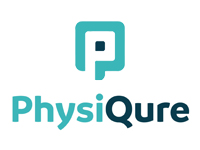The Modern Era of Physical Therapy begins with Technology and tools. Till date, PTs used to rely solely on their eyes, hands, and traditional instruments. Today, PTs have taken this expertise to a new level by using digital and robotic technology.
We will discuss a few of the technological advancement that every physiotherapist must know in 2020.
Wearable Resistance
A robotic exoskeleton is used that offers resistance while walking. It strengthen the muscles of the legs, enabling people with cerebral palsy to walk more comfortably.
The researchers developed a robotic exoskeleton that can be tied on the legs. The exoskeleton will track the walking style of the person wearing it through sensors combination. It provide a moderate amount of resistance while the person is walking forward.
The leg muscles have to work harder to overcome this resistance. This is the basic principle behind most exercises which strengthen the muscle.
Blood Flow Restriction Rehabilitation
Training with blood flow restriction will help patients achieve strength training benefits when lifting lighter loads. This reducing the overall stress on the limb.
BFR preparation can be done in a daily exercise routine. It can also be carried out safely in physical therapy clinics under the guidance of qualified professionals
Biofeedback Curve
A biofeedback curve will help you perform relaxation exercises. These exercises you can fine-tune to control various body functions. You may use a calming technique, for example, to calm down the brainwaves that activate when you have a headache.
The concept behind biofeedback is that you can gain greater control over your health. It can be done by harnessing the power of your mind and being conscious of what’s going on within your body.
Omnidirectional Treadmill
An omnidirectional treadmill helps you to walk, run or strap into either direction easily. Physiotherapists may also recommend home use of the Omni for those recovering from leg injuries or replacements to the knee/hip.
Robotic Rehabilitation
Robotic rehabilitation and assistive technologies aim to relieve stress. It also control expenses on the physiotherapy workers while improving the quality of life of the patients. Emerging technologies can provide more therapeutic activities through robotic interventions.
Virtual reality in at-home care
VR therapy simulations are developed with accurate control of the stimuli and cognitive load experienced by the participant. With VR, you communicate in 3 dimensions with the virtual world. It creates a more immersive environment that allows better use of your senses and brainpower.
The portability and affordability of headsets also open up opportunities outside of a clinical environment to use virtual reality. This helps in continuing care and staying motivated with any patients to do those exercises at home.
AI provides relief to back pain sufferers
AI automates the diagnosis and treatment of chronic back pain of patients. It improves efficiency at work and provide a time-saving tool for therapists.
A fully automated, unmanned physiotherapy robot was developed to achieve this. The robot determines successful therapies using artificial intelligence (AI) and monitors patients’ condition. First, the robot explores the body with 3D thermal scan, identifying problem spots. It then detect the kind of back injury and to define the treatments needed.
Using modern technologies and digital practices gives physical therapy a great opportunity to engage with a wide range of audiences for better effect and impact.
